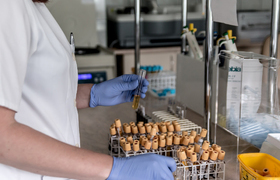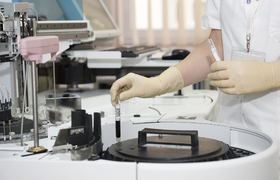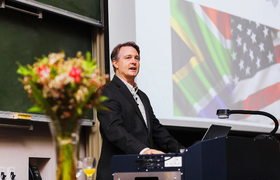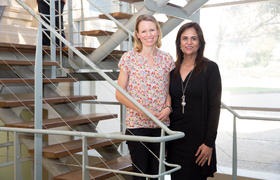Become someone’s hope for life
24 July 2019 | Story Niémah Davids. Photo Tareq Salahuddin, Flickr. Read time 6 min.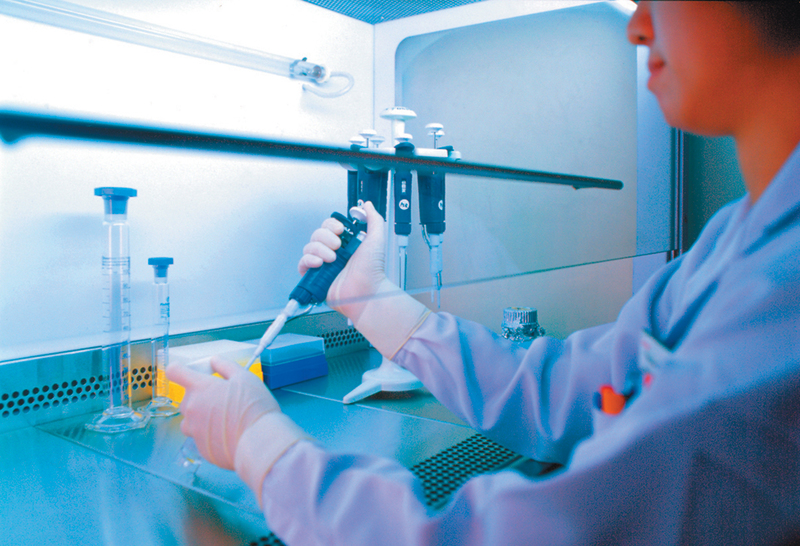
It’s been a tough year for University of Cape Town (UCT) alumnus Dr Nabeelah Ismail. Just five months ago she was diagnosed with acute lymphoblastic leukaemia (ALL) – an aggressive cancer of the blood and bone marrow – and in the blink of an eye her life changed forever.
The 30-year-old doctor, employed by the City of Cape Town, studied in UCT’s Faculty of Health Sciences and graduated in 2013.
Her ALL diagnosis came as a shock. She had a healthy lifestyle, exercised regularly and had never consumed alcohol or smoked cigarettes.
“In an ironic twist of fate, I have fallen subject to a rare illness in the field I love,” she said, adding that her diagnosis has completely altered her outlook on life.
She’s called a hospital ward home for the past 100 days, and continues to receive rigorous bouts of chemotherapy treatment to combat the ALL.
“I have, in a very short space of time, developed a completely different perspective on life. Unfortunately, it has taken this doctor-patient role reversal to grasp the magnitude of this illness.”
“I’ve been living in the hospital, so my entire routine has changed. I have, in a very short space of time, developed a completely different perspective on life. Unfortunately, it has taken this doctor-patient role reversal to grasp the magnitude of this illness,” she said.
While Ismail is now in the final stages of her treatment process, that’s not where it ends. What she needs is a blood stem cell (bone marrow) transplant. But finding a suitable donor match needs to happen first.
On a donor drive
According to Kim Webster of the Sunflower Fund, which fights blood diseases like leukaemia through the recruitment of stem cell donors and maintaining a registry of potential donors, only 75 000 South Africans are currently registered as donors. With just a 25% probability of patients finding a donor match within their immediate families, the need for additional donor registration is critical.
“There are many misconceptions about the process involved in being a donor. Some people believe that if they are blood or organ donors they are automatically registered as stem cell donors. But this is not the case,” Webster said.
She said the organisation regularly does educational drives on how to become a donor, the journey after a match is found and the benefits of registering as a blood stem cell donor.
Ismail said many patients, like her, are provided with hope through the registries of potential donors, committed to helping anyone in need of a life-saving stem cell transplant.
“I encourage you to help provide that hope to patients,” she urged.
The UCT community will have an opportunity to become someoneʼs hope for life by registering as stem cell donors tomorrow, 25 July, when the university, in partnership with the Sunflower Fund, hosts a donor drive in Sarah Baartman Hall.
“Many patients, like me, are provided with hope through the registries of potential donors, committed to helping anyone in need of a lifesaving stem cell transplant.”
Ismail and her family have made an impassioned plea to staff and students to participate in the drive, and to improve her and other patientsʼ chances of finding a suitable donor match.
Donor journey
During the donor recruitment process, a swab is taken from inside the cheek to collect the potential donor’s DNA, which is then sent for analysis. The information obtained is loaded onto the registry.
When doctors are on the look-out for a potential donor match for a patient, they can do a comparison of the patient’s information with that of the registered donors. Webster said once a likely match is identified, additional tests are conducted to ensure a 100% match.
Despite popular belief, once a match is found, the transfusion process doesn’t involve drilling into the donor’s bones.
Instead, the donor undergoes a full medical examination to establish any health risks and conditions. Five days prior to the donation, the donor will receive growth hormone injections to stimulate the body’s stem cell production. On the day of the donation, the donor is hospitalised for the stem cell harvesting process, which takes an average four to six hours.
“A needle is inserted into both arms and blood is then drawn from one arm and goes through a stem cell separating machine that collects the stem cells. The blood is then pumped back into the body on a repeated cycle.
“Once a bag of stem cells is collected, the donor is discharged. There is no operation, incision or anaesthetic involved,” Webster explained.
Those interested in registering during the UCT donor drive should avoid eating for at least one hour before the swab is taken.
 This work is licensed under a Creative Commons Attribution-NoDerivatives 4.0 International License.
This work is licensed under a Creative Commons Attribution-NoDerivatives 4.0 International License.
Please view the republishing articles page for more information.







